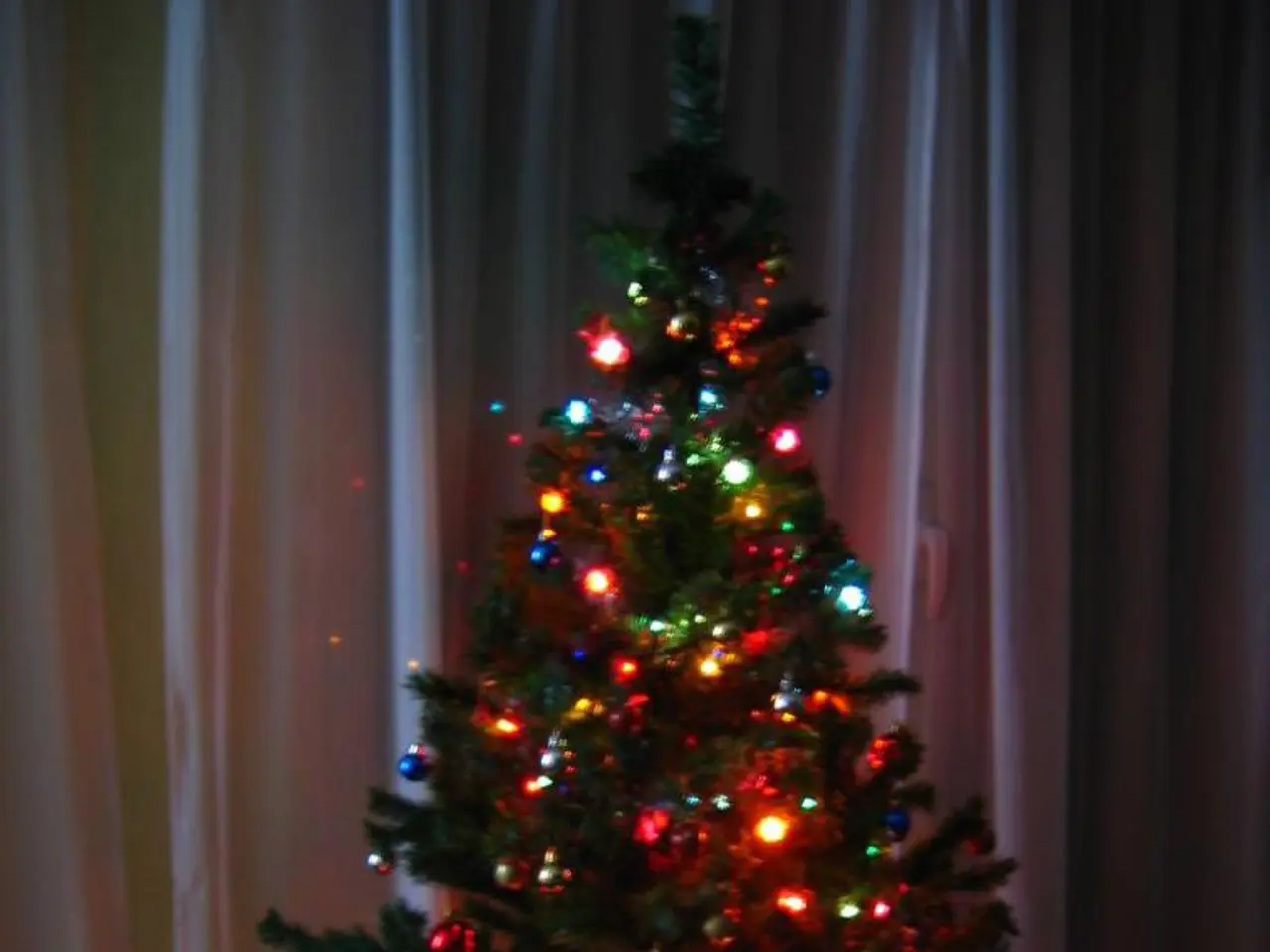Eight attractive indoor Christmas plants to purchase for the festive season this year
Cyclamen and the Christmas Cactus are two popular choices for indoor plants during the festive season, each offering a unique charm that complements holiday decor.
Cyclamen should be kept with moist soil but avoided from overwatering to keep it looking happy and healthy. A vibrant red variety is a classic choice, but a version with snowy white petals can also create a festive display.
The Christmas Cactus (Schlumbergera), a classic holiday plant, is known for its bright pink, white, or red tubular blooms primarily during late fall and winter, making it perfect for Christmas color. This plant thrives in bright, indirect light, prefers cooler indoor temperatures, and likes humidity around 60%. Water moderately when the top 2 inches of soil dry out, and reduce watering and light for 6 weeks before blooming to encourage flowers.
Other plants that add greenery and floral accents suitable for the season include the Peace Lily (Spathiphyllum), with white flowers blooming all year, the African Violet (Saintpaulia), known for its small, colorful blooms, the Anthurium (Flamingo Flower) with its glossy heart-shaped leaves and bright flowers, the Begonia with its attractive leaves and flowers in various colors, and the Orchid with its elegant blooms lasting several weeks.
Caring for Christmas Cactus requires providing bright room light but avoiding direct sun. Maintain temperatures between 16 to 29 °C (60-85 °F). Water when the top 2 inches of soil are dry; avoid waterlogging to prevent root rot. Maintain humidity near 60%, which can be done with a humidifier or pebble tray. To encourage blooming, reduce water and light in fall to simulate natural dormancy, then increase watering and light as buds develop. Use well-draining cactus or succulent soil.
For other decorative indoor plants like large leaf tropical plants (e.g., Kentia Palm, Bird of Paradise), provide bright indirect light, water when the top inch of soil is dry, increase humidity with misting, and avoid cold drafts.
The azalea plant is shaped into a conical tree-like form and arrives in bud, ready to produce double-flowered heads in either red or white. It stands around 50cm-60cm tall. The azalea comes in a zinc container and requires ericaceous compost and ideally, water with rainwater.
The poinsettia, also known as a 'Christmas Star', is another popular indoor Christmas plant. Its striking bracts and pointed leaves make it ideal for festive displays, and it can last for months or even years with the right care. Poinsettias thrive in warm temperatures and should be kept away from draughty spots.
The red amaryllis (Hippeastrum) has red, trumpet-shaped flowers on sturdy stalks and can start flowering just a few weeks after it's delivered. Red amaryllis plants are harmful if eaten, so always keep them away from pets. The red amaryllis bulbs flower around eight weeks after planting and with the right care, it'll flower year after year.
A less common but equally charming option is the Christmas rose (Helleborus niger), which has snowy white petals and warm yellow stamens, and flowers through December to March.
For a unique twist on traditional Christmas decorations, consider the Jasmine on a hoop, an unusual hooped structure of a live jasmine plant, inspired by Christmas wreaths. It brings a heavenly scent into your home.
For more ideas on festive decorations, read the guide to making willow Christmas decorations. For gift ideas for gardeners, read the guide to the best gifts for gardeners. The Nordmann Fir Christmas tree, which is British-grown, two feet tall, and can be used as a tabletop decoration or outdoor decoration with Christmas lights, is another plant mentioned.
- To keep Cyclamen healthy, it's important to keep the soil moist but avoid overwatering, and consider a vibrant red or snowy white variety for a festive display.
- The Christmas Cactus, or Schlumbergera, is known for its bright pink, white, or red tubular blooms in late fall and winter. This plant thrives in bright, indirect light, cooler temperatures, and high humidity.
- Other plants suitable for the holiday season include the Peace Lily, African Violet, Anthurium, Begonia, and Orchid, each offering unique traits like glossy leaves, colorful flowers, and long-lasting blooms.
- For large leaf tropical plants like the Kentia Palm or Bird of Paradise, provide bright indirect light, water sparingly, increase humidity with misting, and protect them from cold drafts.




